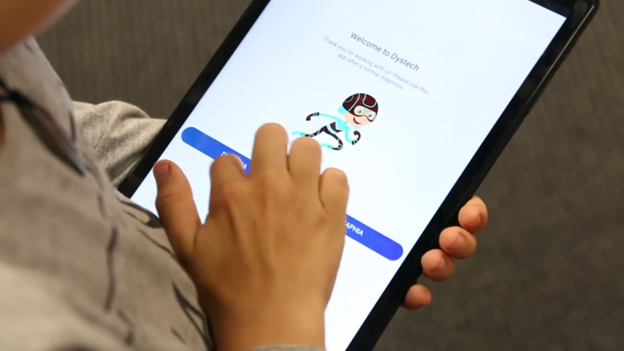Up to 43.5 million Americans struggle with dyslexia. That number equates to 15% of the population. However, only 3.5% of students receive special education services for the disability.
The gap between the prevalence of dyslexia and our education system’s ability to address it is a problem. Unidentified learning disabilities contribute to a host of undesirable life outcomes.
Increasing screening measures and resources for dyslexic students is crucial to their success. Read on to learn more about the importance of dyslexia screening in education.
What Is Dyslexia?
Dyslexia is the most common learning disability. However, it’s also misunderstood.
When they think of dyslexia, many people assume it means a reader or writer flips similar letters. According to the common perception, a person with dyslexia might read or write a lowercase “b” as a “d,” for example.
In fact, some dyslexic individuals struggle to identify and form letters. However, reversing letters is often a normal part of a child learning to write. In most cases, it is not a cause for concern.
Furthermore, dyslexia is so much more than flipping letters. Dyslexia is not a disorder of the eyes. Dyslexia, a specific neurobiological learning disability, affects the way the brain processes language. It is not a “disease,” and its causes are rooted in genetics and the biology of the brain.
Dyslexic individuals struggle to process and use letters and the sounds of letters. These letters and their sounds are the building blocks of communication. As a result, dyslexic individuals find reading and writing challenging.

dyslexic individuals find reading and writing challenging
What Are the Signs of Dyslexia?
Students with dyslexia can exhibit the following signs:
- Difficulty recognizing or forming letters after more than two years of learning
- Difficulty recognizing words
- Poor spelling
- Difficulty reading fluently
- Poor reading comprehension
- Limited vocabulary development
- Difficulty writing coherently
- Poor grammar
- Difficulty expressing themselves with or understanding spoken language
Of course, these signs manifest differently depending on an individual’s age. The youngest children might struggle to learn nursery rhymes. Middle school children might spend longer on a reading worksheet than their classmates. High school students might find writing an essay a Herculean task.
Across age groups, dyslexia often manifests in task avoidance and poor academic performance. As a result, students with unidentified dyslexia are often labeled “lazy” or “dumb.” Neither of these descriptions is accurate or fair.

dyslexic students, as a group, are as motivated and intelligent as their peers
In fact, dyslexic students, as a group, are as motivated and intelligent as their peers. They simply require special education services to help them achieve their potential. Identifying students needing special education services, in turn, requires screening.
The Importance of Dyslexia Screening in Education
The importance of dyslexia screening cannot be overstated. The consequences of failing to identify learning disabilities highlight its importance.
Long-Term Consequences of Unidentified Learning Disabilities
We live in a “knowledge economy.” In this economy, literacy, critical thinking, and access to information are essential. When they do not receive the services they need, dyslexic students struggle with precisely these tasks. As a result, they often struggle to succeed in the adult world.
Children with unidentified dyslexia are at greater risk than their peers to drop out. They are also more likely to become unemployed or underemployed. They are even more likely to become incarcerated.
These long-term consequences are alarming. However, dyslexic children are already experiencing the negative consequences of their learning disability.
Short-Term Consequences of Unidentified Learning Disabilities
Children with learning disabilities struggle with shame, anxiety, frustration, and loneliness. These negative psychological consequences contribute to a negative self-image and low self-esteem.
Of course, negative psychological consequences affect a child’s mental health. However, they also compound a dyslexic child’s academic difficulties.
As a student experiences frequent failure, his or her motivation is affected. To protect themselves, dyslexic students can “shut down.” They may also engage in task and school avoidance. This is especially true when they do not receive the support they need to succeed.
Good teachers notice disabled children “shutting down.” However, even some of the best teachers misinterpret this behavior as misbehavior.
In fact, many students labeled as “lazy,” “dumb,” and “troublesome” are none of those things. Rather, they are dyslexic students who are not receiving the services they need. They are, furthermore, students who could be fully contributing members of the classroom — if they received the necessary support.
Compounding their academic struggles, dyslexic children suffer, finally, at the hands of their peers. Studies show that disabled students are bullied at rates 2-10% higher than their peers.
As educators, teachers have a responsibility to promote all students’ development as students and as people. That means protecting them from harm and equipping them for success. Achieving both of those goals requires identifying and meeting their unique needs.
Dyslexia screening tools make this identification possible.
The Promise of Screening
While the short- and long-term consequences are disheartening, there are reasons for hope. However, hope for students with learning disabilities depends on identifying those students.
Screening Can Increase Testing
The U.S. government devotes significant funding to special education testing and interventions. Furthermore, federal education laws require schools to test students with suspected disabilities. Nevertheless, the gap between students who are tested and students needing services remains.
Despite government funding and mandates, schools sometimes resist testing students because of cost. Some parents also resist testing without specific evidence that their child could benefit.
Fortunately, dyslexia screening tools can help to narrow the gap between students needing services and students being tested.
Teachers Can Increase Screening
Research into dyslexia has produced highly accurate screening methods. These include Dystech, a dyslexia test that uses artificial intelligence.
Quick, reliable, and affordable, Dystech is among the easiest forms of dyslexia screening for teachers to use. In fact, teachers can implement it in less than 10 minutes. They can do so, moreover, without additional training.
You can share this link with your student’s parent to start online dyslexia screening test (use READTHEORY coupon code, to get 10% off): https://dyscreen.dystech.com.au/?referral=IKMiq1nujC16BscMgnoY0j6Hrho=&referral_name=Read%20Theory

Dystech app – reliable dyslexia screening
Parents will be able to share their results via email, empowering you to understand your students a little better.
As a teacher, you can and must advocate for your students. This advocacy includes classroom or remote screening and, if necessary, further testing.
The following are among the steps you can take to meet all of your students’ needs:
- Learn all that you can about dyslexia and other learning disabilities
- Ask parents to go through an online screening available using this link (use READTHEORY coupon code, to get 10% off): https://dyscreen.dystech.com.au/?referral=IKMiq1nujC16BscMgnoY0j6Hrho=&referral_name=Read%20Theory
- Ask parents to share the result with you, in order for you to properly adjust your teaching
- Document classroom interventions and their outcomes
- Document instances of unfair treatment, bullying, and other negative consequences
- Encourage parents to make a formal request for diagnosis when screening raises concerns
Importantly, as you advocate for and support your students, remain encouraging. Also, maintain high standards. Research shows that the adage—“If you can believe it, you can achieve it”—is accurate.
Dyslexia affects children of all intellectual levels. Students with dyslexia are as intelligent and motivated as their peers. With the right support, they can be as successful.
Parents and educators are among those best positioned to promote this success. Their role is especially important for children with learning disabilities, like dyslexia.
Screening for Success: The Importance of Identifying Dyslexia in Education
Dyslexic students struggle more than their peers. This is true academically, socially, and economically. It is especially true when their disability remains unidentified.
Dyslexia screening is crucial for all students to receive the services they need.
As you work to meet all your students’ needs, count on our blog to meet yours. If you found this article on dyslexia helpful, check out this one on reading comprehension and autism.




1 reply on “The Importance of Dyslexia Screening in K-12 Education”
Dyslexia is a very common learning disorder, which makes access to education difficult for many children, due to the lack of knowledge about this disorder and therefore the lack of centers and professionals trained to deal with this group of children.